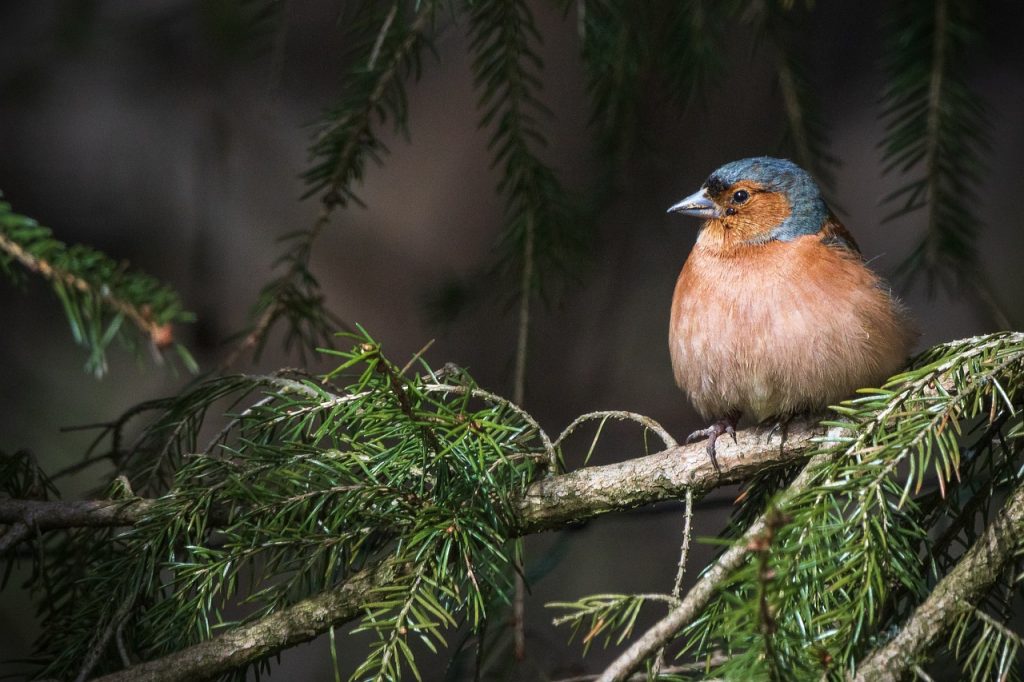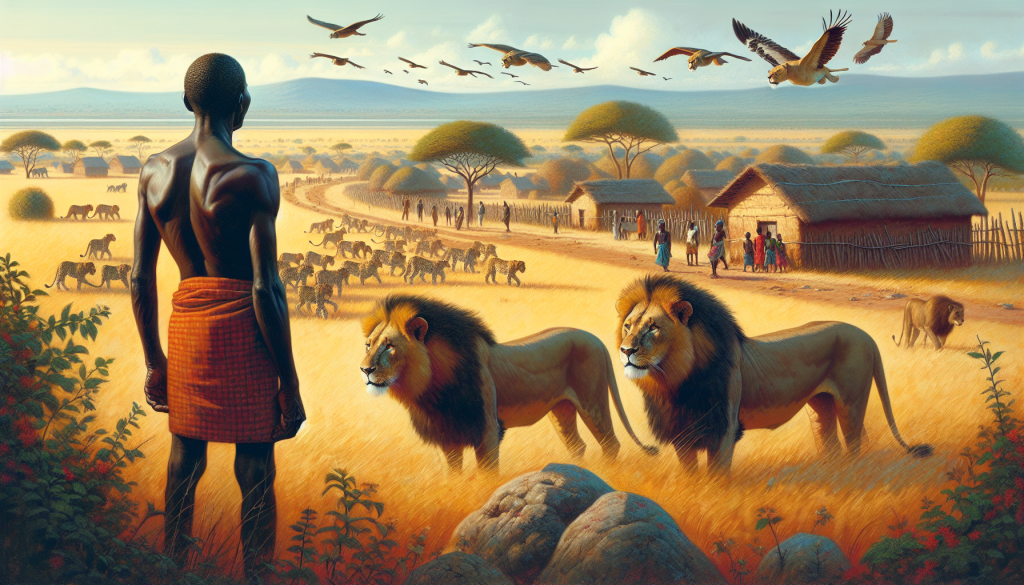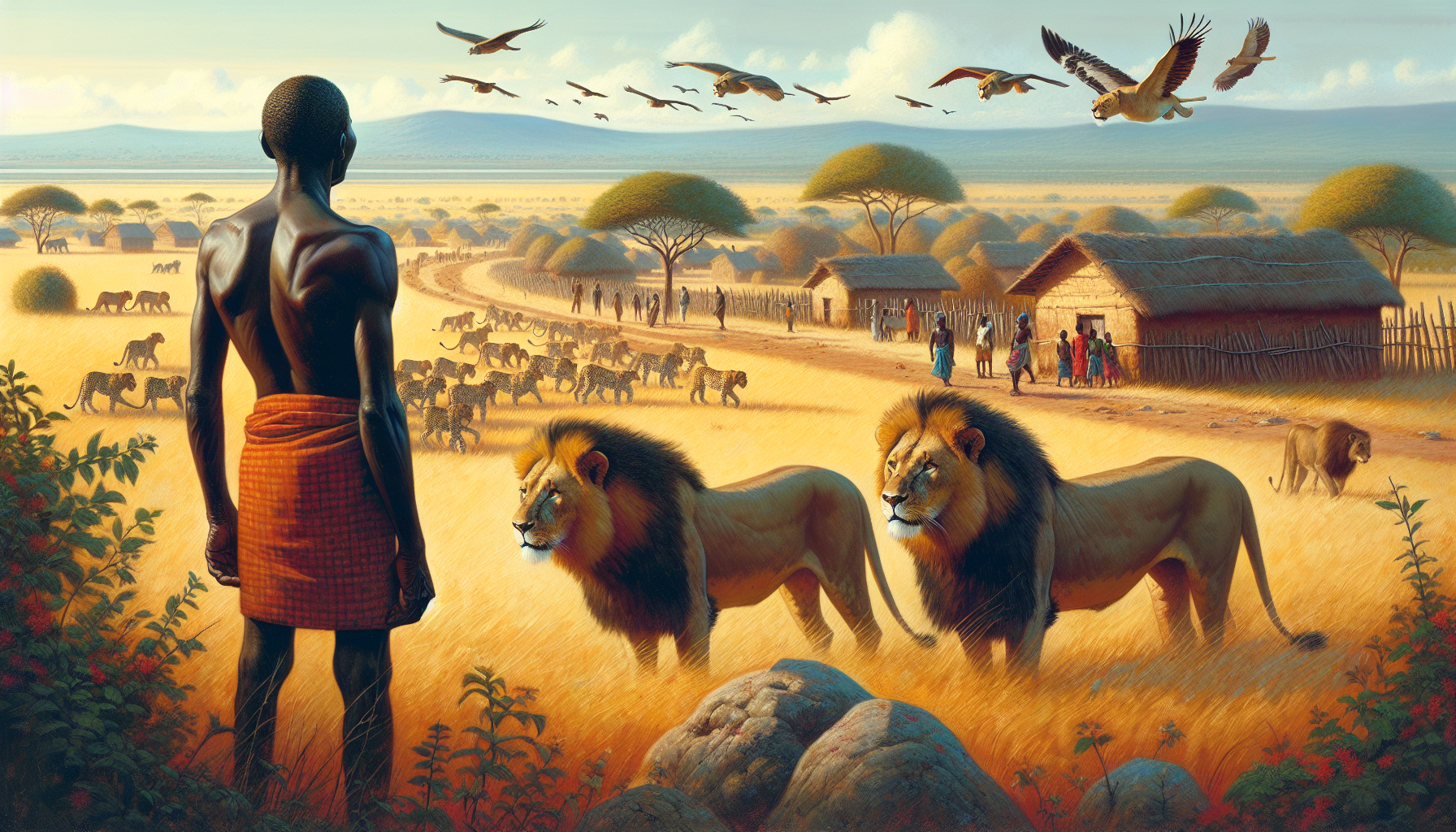Imagine a world where lions and humans not only coexist peacefully but also thrive together. In a bid to protect these majestic creatures and ensure the sustainability of local communities, a groundbreaking initiative called Lions and Livelihoods has been making waves. By engaging with local communities and empowering them with alternative livelihood opportunities, this program aims to dismantle the age-old conflict between humans and lions, paving the way for a future where both can thrive harmoniously.

Threats to Lions and Livelihoods
Loss of Habitat
One of the main threats to lions and their coexistence with human communities is the loss of habitat. As human populations expand and agricultural practices intensify, natural landscapes are converted into farmlands and settlements. This encroachment on lion habitats not only diminishes the available space for these majestic creatures but also disrupts their natural prey populations. Consequently, this leads to increased human-lion conflict as lions are forced to search for alternative food sources, such as livestock.
Human-Lion Conflict
Human-lion conflict arises when the interests and livelihoods of local communities clash with the presence of lions. As lions stray into human settlements and prey on livestock, tensions rise, and communities may resort to retaliatory killing of lions. This conflict not only impacts lion populations but also threatens the livelihoods of people who rely on their livestock for sustenance. A sustainable solution must be found to mitigate this conflict and promote coexistence.
Poaching and Illegal Wildlife Trade
Poaching remains a significant threat to lions, driven by the demand for their body parts and trophies in the illegal wildlife trade. Lions are targeted for their bones, skins, and other parts, which are believed to have medicinal or cultural value in certain regions. This illegal trade not only contributes to the decline of lion populations but also undermines efforts to conserve these iconic creatures. Effective measures to combat poaching and wildlife trafficking are essential to ensure the survival of lions and protect the livelihoods of communities dependent on their presence.
Engagement as a Solution
The Role of Local Communities
Local communities play a crucial role in addressing the challenges faced by lions and their coexistence with human populations. By involving communities in conservation efforts, their knowledge and traditional practices can be utilized to mitigate human-lion conflict and preserve lion habitats. Empowering communities to become stewards of their natural resources creates a sense of ownership and responsibility, fostering a sustainable relationship between humans and lions.
Collaboration with Stakeholders
Engaging various stakeholders, including government agencies, non-profit organizations, and researchers, is essential for effective lion conservation. Collaboration allows for the sharing of resources, expertise, and perspectives, enabling comprehensive solutions to be developed. Involving stakeholders at all levels ensures that the unique needs and perspectives of different communities are considered, resulting in more targeted and impactful conservation strategies.
Education and Awareness
Education and awareness programs are instrumental in fostering a greater understanding of lion conservation among local communities and the wider public. By promoting the ecological importance of lions and their role in maintaining balanced ecosystems, these initiatives can help mitigate human-lion conflict and change negative perceptions towards these magnificent creatures. Raising awareness about the benefits of sustainable conservation practices also encourages individuals to actively participate in protecting lions and their habitats.
Conservation Programs
Community-Based Conservation
Community-based conservation programs involve working directly with local communities to promote the conservation of lions and their habitats. These initiatives strive to address the root causes of human-lion conflict by engaging communities in decision-making processes, providing alternative livelihood options, and implementing sustainable land management practices. By integrating local knowledge with scientific expertise, community-based conservation programs create win-win situations for both people and lions.
Livestock Compensation
Livestock compensation programs aim to alleviate the economic burden on communities affected by lion predation. By providing financial compensation or insurance schemes for livestock losses, these programs help reduce the inclination for retaliatory killings of lions. Furthermore, they incentivize communities to take proactive measures to protect their livestock, such as improving husbandry practices or implementing predator-proof enclosures, consequently creating a more harmonious coexistence between humans and lions.
Eco-tourism Initiatives
Eco-tourism initiatives leverage the value of lions and their habitats within the tourism industry to create economic opportunities for local communities. By promoting responsible and sustainable tourism practices, these initiatives generate income and employment, providing an incentive for communities to protect and conserve lion populations and their ecosystems. Additionally, eco-tourism can offer educational opportunities, fostering a deeper appreciation for wildlife and bolstering conservation efforts.
Benefits of Sustainable Solutions
Protecting Biodiversity
By implementing sustainable solutions to address the threats faced by lions, we can safeguard not only the survival of this iconic species but also the broader biodiversity of their habitats. Lions are keystone species, playing a crucial role in maintaining the balance of ecosystems. Their conservation ensures the preservation of a range of species and the ecological integrity of their habitats.
Preserving Cultural Heritage
Lions hold significant cultural and historical value in many communities around the world. Preserving lion populations means safeguarding cultural heritage and traditional practices that have been intertwined with these creatures for generations. By protecting lions, we can ensure the continuity of cultural identity and the transmission of invaluable knowledge from one generation to another.
Enhancing Rural Development
Promoting sustainable solutions for lion conservation has the potential to enhance rural development and improve the well-being of local communities. By diversifying income streams through eco-tourism initiatives, sustainable agriculture practices, and alternative livelihood options, communities can experience improved standards of living and reduced dependency on ecologically harmful practices. This transformative impact not only benefits humans but also contributes to the overall resilience and sustainability of rural areas.

Case Studies
Maasai Mara Conservancies
The Maasai Mara, a world-renowned wildlife reserve in Kenya, has implemented a community-based conservation model through the establishment of conservancies. These conservancies are managed by local Maasai communities who act as landowners and custodians of the wildlife within their territories. By incorporating traditional land management practices, wildlife monitoring systems, and sustainable tourism activities, the Maasai Mara Conservancies have successfully protected lion populations while generating economic benefits for local communities.
Ruaha Carnivore Project
In Tanzania’s Ruaha landscape, the Ruaha Carnivore Project has been working closely with local communities to mitigate human-lion conflict and promote sustainable lion conservation. Through initiatives such as predator-proof enclosures for livestock, early warning systems, and the provision of livestock compensation, the project has significantly reduced retaliatory killings of lions. Additionally, the project strives to empower local communities through education and training, creating a sense of ownership and responsibility for lion conservation.
Hwange Lion Conservation Project
The Hwange Lion Conservation Project in Zimbabwe focuses on research, conservation, and community engagement to protect lions and their habitats. By conducting scientific studies on lion behavior and ecology, the project informs conservation strategies and management plans. Furthermore, the project collaborates with local communities to implement sustainable land-use practices and promote the economic benefits of lions for tourism, thus creating incentives for lion conservation.
Challenges and Limitations
Political Will and Law Enforcement
One of the major challenges in lion conservation is the need for strong political will and effective law enforcement. This includes implementing and enforcing regulations to combat poaching and illegal wildlife trade, as well as establishing protected areas and enforcing land-use policies. Without political support and effective law enforcement, efforts to conserve lions and their habitats may face significant obstacles.
Financial Constraints
Conservation initiatives often require substantial financial resources to implement and sustain. Funding constraints can hamper the effectiveness and reach of conservation programs, limiting their ability to address the multifaceted challenges faced by lions and their coexistence with humans. Securing long-term funding commitments and exploring innovative financing mechanisms are crucial to overcoming this limitation.
Balancing Wildlife Conservation and Livelihoods
Finding a balance between wildlife conservation and the livelihoods of local communities remains a complex challenge. It is essential to ensure that conservation efforts do not inadvertently harm the socio-economic well-being of communities. Engaging communities in decision-making processes, developing sustainable alternative livelihood options, and providing adequate support for transitioning to more environmentally friendly practices are key to achieving this delicate balance.

Promoting Sustainable Solutions Globally
International Cooperation and Funding
The conservation of lions and their habitats requires international cooperation and financial support. Collaborative efforts between governments, international organizations, and NGOs can pool resources, share expertise, and amplify the impact of conservation initiatives. International funding mechanisms can also provide the necessary financial support to implement large-scale conservation projects and sustain long-term efforts.
Policy and Legislative Measures
Formulating and implementing policies and legislation that prioritize lion conservation is fundamental to securing their long-term survival. Governments must develop comprehensive frameworks that protect lion habitats, combat poaching and illegal wildlife trade, and promote sustainable land-use practices. Additionally, collaboration between governments and local communities is crucial to ensure that policies are contextually relevant, effectively enforced, and mutually beneficial.
Grassroots Activism
Grassroots activism and public engagement are powerful tools in raising awareness and generating support for lion conservation. Local communities, NGOs, and concerned individuals have the ability to advocate for policies and practices that protect lion populations and their habitats. Grassroots movements can mobilize public opinion, pressure governments and corporations to act responsibly, and create a groundswell of support for sustainable solutions.
Creating Long-Term Impacts and Engagement
Capacity Building and Training
Building the capacity of local communities and stakeholders is essential for ensuring the long-term sustainability of lion conservation efforts. Capacity-building programs can focus on skills development, knowledge sharing, and institutional strengthening. By equipping communities with the necessary tools and expertise, they can actively participate in decision-making processes, implement conservation measures, and become champions for lion conservation.
Monitoring and Evaluation
Regular monitoring and evaluation of conservation programs are crucial to assess their effectiveness and adapt strategies as needed. This involves collecting data on lion populations, human-lion conflict incidents, and socio-economic indicators. Monitoring and evaluation allow for evidence-based decision-making and the identification of areas that require intervention or improvement, ensuring that resources are allocated efficiently and outcomes are achieved.
Securing Local Support and Buy-In
Creating buy-in and fostering local support is vital for the success of lion conservation initiatives. Engaging with communities at every stage, from project planning to implementation and evaluation, ensures that their voices are heard and their needs are addressed. Community involvement also helps build trust, promote ownership, and cultivate a sense of responsibility among local populations, resulting in sustainable, long-term conservation efforts.

Conclusion
Lions and Livelihoods: A Shared Responsibility
The conservation of lions and the preservation of livelihoods are intricately linked and require a collaborative and holistic approach. By recognizing the value of lion populations and engaging local communities as active participants in conservation efforts, sustainable solutions can be found. By addressing the threats of habitat loss, human-lion conflict, and poaching, we can foster coexistence and protect both lions and the livelihoods of those who share the landscape with them.
The Power of Engagement in Conservation
Engagement is at the heart of finding sustainable solutions for lions and their coexistence with human communities. By fostering collaboration, promoting education and awareness, and empowering local communities, we can create a future where lions roam freely, ecosystems thrive, and communities prosper. The power to conserve lies within each individual and collective effort, and together, we can ensure a brighter future for lions and the communities that depend on them.

